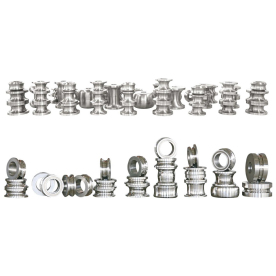[Inductor ]Understanding Inductors: Their Role, Functionality, and Applications in Modern Electronics
News 2024-8-13
Inductors are passive electronic components that play a crucial role in various electrical and electronic circuits. Recognized for their ability to store energy in a magnetic field when electrical current flows through them, inductors are fundamentally defined by their ability to oppose changes in current. This property, known as inductance, is measured in henries (H) and is essential for several applications in filtering, energy storage, and signal processing in modern electronic devices.

Understanding Inductors: Their Role, Functionality, and Applications in Modern Electronics
One of the most familiar applications of inductors is in RF (radio frequency) circuits. In these applications, inductors are used in conjunction with capacitors to create tuned circuits, which can selectively filter specific frequencies of radio signals. By combining inductors and capacitors in resonant circuits, engineers can design devices that either respond to or reject specific frequencies. This is fundamental to the functioning of radios, televisions, and other communication devices.
Inductors are also integral to power supply circuits. They are commonly used in switch-mode power supplies (SMPS), where they store energy and smooth out voltage outputs. When the switch inside an SMPS cycles on and off, the inductor helps maintain a consistent output voltage by smoothing out the fluctuations caused by the rapid switching. This capability is especially important in portable devices, where battery life and efficiency are critical.
Moreover, inductors are used in power factor correction systems. In electrical systems, inductive loads—such as motors and transformers—can cause the current to lag behind the voltage, leading to inefficient power usage. Inductors in power factor correction circuits help realign the phase difference between voltage and current, improving overall system efficiency.

Understanding Inductors: Their Role, Functionality, and Applications in Modern Electronics
Despite their numerous benefits, using inductors comes with certain challenges. One concern is their size; inductors can be relatively large compared to other components, which may limit their use in miniature devices. Additionally, inductors can introduce power loss due to copper resistance and core losses in magnetic materials, resulting in heat generation. Designing circuits with inductors requires careful consideration to optimize their performance while minimizing drawbacks.
In recent developments, the demand for inductors has surged with the rapid advancement of technology. The rise of electric vehicles (EVs), renewable energy systems, and sophisticated communication technologies has driven innovation in inductor design and materials. New materials and manufacturing techniques have led to smaller, more efficient inductors capable of operating at higher frequencies, thus enabling their use in cutting-edge applications.

